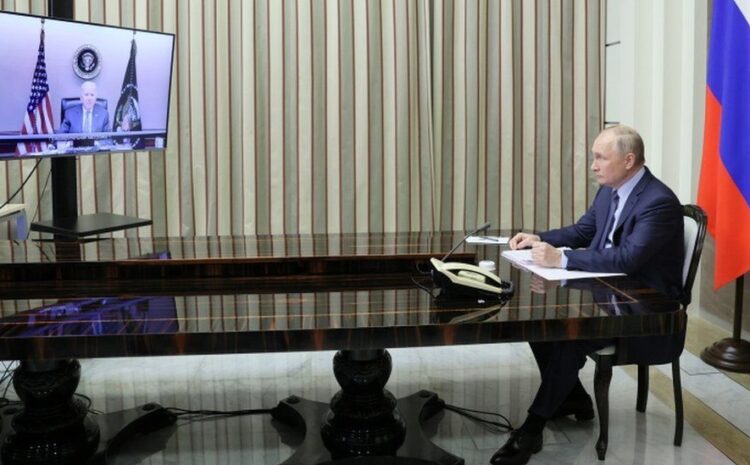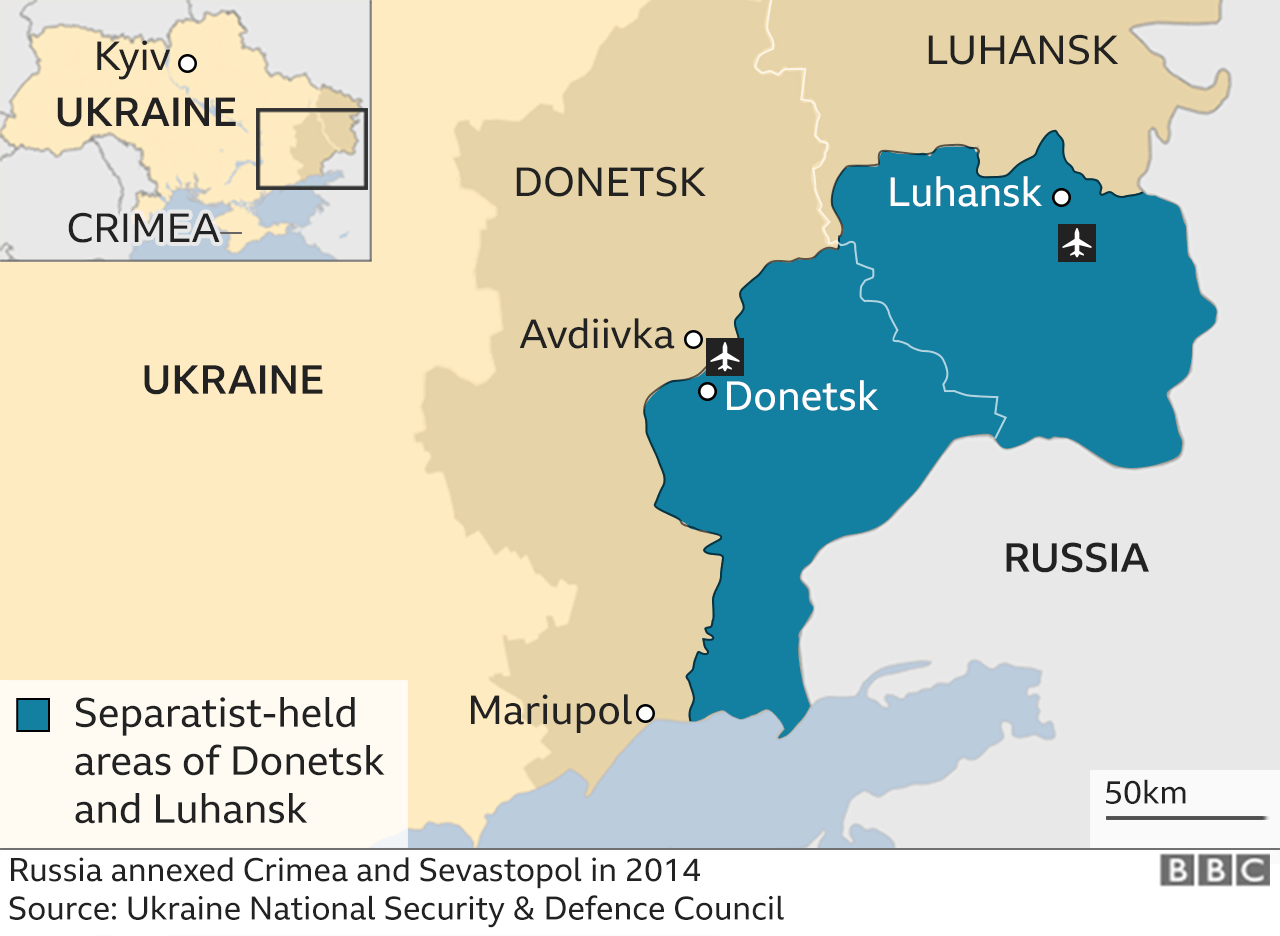
IMAGE SOURCE, REUTERS Image caption, Putin joined the meeting by video link from Sochi
The US says it is preparing “strong economic and other measures” over fears of a Russian invasion of Ukraine, after Joe Biden and Vladimir Putin spoke.
In a video call, President Biden voiced worries over Russian troop build-ups near the border with Ukraine and called for a de-escalation of tensions.
Russia says it will not attack.
President Putin accused Ukraine of provocation, and sought guarantees against eastward Nato expansion and deployment of weapons close to Russia.
More than 90,000 Russian troops are believed to be massed near Ukraine’s borders. The movement has strained already tense relations between Russia and the US.
- ANALYSIS: Is Russia preparing to invade Ukraine?
After Tuesday’s call, US National Security Adviser Jake Sullivan said the Biden administration was preparing specific robust responses in the weeks ahead if they were required.
Mr Sullivan refused to be drawn on what the economic measures might be. But he said Nord Stream 2, a new gas pipeline from Russia to Germany, which is not yet in operation, provided “leverage” for the US and its allies.
“If Vladimir Putin wants to see gas flow through that pipeline, he may not want to take the risk of invading Ukraine,” he told journalists. Earlier reports said US officials had reached agreement with Germany to shut down the pipeline in the event of an invasion.
 IMAGE SOURCE, REUTERS
IMAGE SOURCE, REUTERSOther possible measures include restrictions on Russia’s banks converting roubles into foreign currencies, or even disconnecting Russia from the Swift global financial payment system, reports say.
“Things we did not do in 2014 we are prepared to do now,” Mr Sullivan added, referring to Western responses to Russia’s annexation of Crimea.
He also said there was “a lot of give and take” in the call and “no finger-wagging” but that President Biden was “crystal clear where the United States stands on all of these issues”.
The call was held on a secure video link set up under previous administrations but never used before. President Putin spoke from his residence in the southern resort of Sochi and President Biden from the White House.

What form Russia’s military option could take
By Jonathan Marcus of the Strategy and Security Institute, University of Exeter
Russia’s military option could take a variety of forms from a large incursion, to a significant invasion of the eastern part of Ukraine. One aim would be to bring the main fighting elements of the Ukrainian army to battle and to inflict such a defeat upon them that the Kyiv government has to rethink its position.
Invading territory amidst a hostile population has significant risks. Ukraine’s armed forces have had some Western weaponry and training and are much improved since 2015. However, Russian forces have also improved over recent years. The firepower Russia is building up is impressive. For all the talk about Ukrainian sovereignty Nato cannot and will not come to Ukraine’s aid.
And additional weapons supplies might simply contribute to Russia’s justification for war.
Of all the military contingencies, Michael Kofman, of the US Centre for Naval Analyses, still thinks that if it happens it will be big. “I think Russia is in the best position since 2014 economically, politically, and militarily to execute such an operation, which is not to say it will happen, but simply to suggest that there are the fewest constraints relative to other periods when it has conducted offensive operations.”

Russia seeks ‘reliable guarantees’
Meanwhile, a Kremlin statement said President Putin had stressed that Russia should not be held responsible for tensions because Nato was making “dangerous attempts to take over Ukrainian territory and increasing its military potential” on Russia’s borders.
“Therefore Russia is seriously interested in getting reliable guarantees fixed in law to rule out the eastward expansion of Nato and the location in countries neighbouring Russia of offensive weapons systems,” the statement added (in Russian).
The White House said President Biden did not make any guarantees to limit Nato expansion.
Ukraine’s President Volodymyr Zelensky said that, while the talks brought “no sensations”, he was grateful for President Biden’s “unwavering support”.
Ukraine’s Foreign Minister Dmytro Kuleba told the Reuters news agency that talks between Mr Biden and Mr Putin had enabled “deterrence and de-escalation”.
But he said the focus is to put together a deterrence package to ward off any further escalation from Russia.
Ukrainian authorities have said Moscow could be planning a military offensive at the end of January, although US officials say it is not yet clear whether President Putin has made a decision.
Presidents Biden and Putin last met in person in Switzerland in June, but made little progress other than to agree to send their ambassadors back and begin a dialogue on nuclear arms control.
In a conference call on Monday night, the White House said the leaders of the US, UK, France, Germany and Italy had formed a joint strategy “to impose significant and severe harm on the Russian economy” should Russia launch an invasion.
President Biden spoke to the four European leaders again after his talks with President Putin.
A large part of the recent Russian military build-up is in Crimea, which Russia seized from Ukraine and then annexed in 2014.
Troops are also gathering near Ukraine’s eastern regions of Donetsk and Luhansk, parts of which are under the control of Russian-backed separatists.
More than 14,000 people have lost their lives in seven years of conflict since Russian-backed forces seized large areas of Ukraine’s east.

